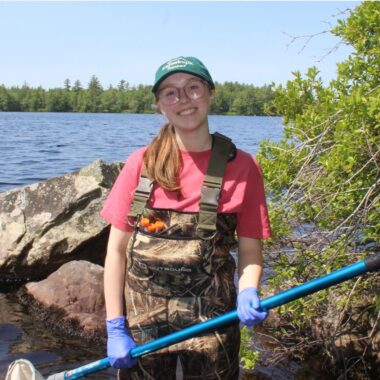
Objectives:
•Determine the MeHg concentrations, total mercury (THg) concentrations, caloric content, and MeHg:calorie ratios for a diverse range of freshwater invertebrates.
•Investigate how environmental characteristics may influence the MeHg:calorie ratios of freshwater invertebrates.
Lucy Boyne
Lucy is a 4th year honours Environmental Science student. She is studying methylmercury (MeHg) in freshwater invertebrates from two lakes in Kejimkujik National Park and National Historic Site, NS.
MeHg bioaccumulates in wildlife and biomagnifies through food webs to neurotoxic levels in top predators such as fish and loons. This project aims to quantify the ratio between MeHg concentration and caloric content for a diversity of freshwater invertebrates that make up the base of the aquatic food web. This quantification will reveal which invertebrates are greater sources of MeHg to predators.
Lucy says, “I am so grateful for the opportunity to plan and execute this research project. I have gained new field and lab skills, and I have developed a huge appreciation for the work that goes into environmental research! My love for environmental science continues to grow throughout my time at Acadia, and I feel lucky to get to dedicate my thesis research to an ecosystem that is so close to my heart: Kejimkujik!”


 Acadia University
Acadia University